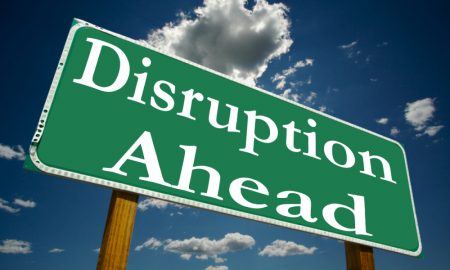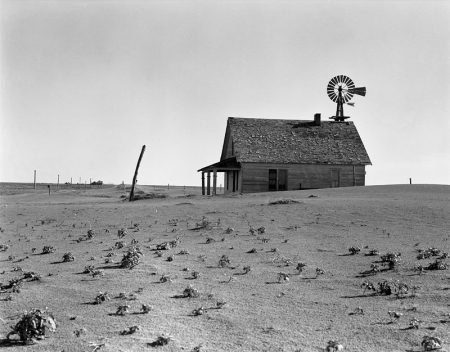August 9, 2016 – Disruptive change produces winners and losers. The winners we don’t have to worry about. How do we help the losers?
When automation first arrived on the scene in the 20th century it replaced home industries and custom crafts with assembly lines. Cottage industries failed while millions of jobs were created in assembly lines. Today assembly lines are facing a paradigm shift as humans work beside robots or are replaced by them.
When oil and natural gas replaced coal as the prime energy source of the 20th century, coal mining contracted but survived because the industry found a traditional niche, thermal energy plants, where its product still gave competitive advantage. But now climate change represents a challenge to the industry. And that challenge may soon impact oil and natural gas as the world makes evidence-based decisions in pursuit of a low-carbon future.
Today disruptive change is everywhere, in almost every form of business, and in our personal lives. It has altered the status quo. It is fomenting social change spawning inequalities while at the same time providing unequaled opportunity. Educational institutions, business and government are on shaky ground as new disruptions overturn standard operating procedure. Banks are confronted by new digital competitors with new ways to move money from point A to point B, and new currencies never previously countenanced. The collective wisdom of the planet is today a fingertip away from anyone with a smartphone and access to the Internet.
The signs of disruptive change are everywhere. They come in waves with the pattern almost always the same. Disruption alters the economic means for industries to remain competitive. It can come in the form of lower-cost, more accessible alternatives to existing products or services. Existing industry or government leaders ignore the disruption. Immediate impacts are felt in the industry supply chain as manufacturing processes and services get disrupted. Jobs are lost. Government revenue sources dry up. Once dominant companies, slow to realize the disruptive change, crash and burn. New companies emerge to become global leaders. New jobs are created but it seems never in equal quantity to the displaced labour supply. And then the next disruptive wave comes and the whole process starts once more.
Nature and Business Cycles in the Recent Past Have Provided us a Model Upon Which to Build Disruptive Engagement Policy
The Dust Bowl of the central United States in the 1930s is disruption we may want to study as we try to develop an appropriate response to change. What led to the disastrous outcomes of the 1930s? A number of unrelated disruptions.
The first was cheap land. The second was a proliferation of small banks with easy access to credit. The third was high agricultural prices in the post-war period of the 1920s. The fourth was abnormally high levels of precipitation in the Central Plains of the United States throughout that decade. The fifth was the conversion of more than 5 million acres of grassland into farms to take advantage of the other disruptions.
Then the next wave arrived: the Wall Street crash, bank defaults, falling agricultural prices, and an eight-year drought. Farms turned to desert from the Canadian prairies to Texas and New Mexico. Countless millions suffered with the only mitigating factor the programs of Roosevelt’s New Deal. The first wave of climate refugees called “Okies” abandoned their homes and farms and headed elsewhere.
Then the next wave: a return to world war, inflated agricultural prices, and a new wet cycle.
Were the lessons learned? Only to some degree.
Ameliorating Disruptive Impacts
Climate change is the singularly most significant disruptor of the 21st century. The economic consequences of it are so far reaching to make the “Dirty 30s” small potatoes. Climate change is not just a 21st century phenomenon. It will shape the next several centuries that follow and will change not only the shape of our continental coastlines, but alter disease vectors, impact forests and farms, and force change upon all of us.
Coal has been under siege for some time in the United States. Natural gas supply is the latest disruptive force displacing mining jobs. The current industry’s employment number have shrunk by 38% since 2012. The jobless rate in coal mining country is almost 50% as the fallout extends to small service businesses dependent on coal.
The industry, which Donald Trump intends to save, is the most visible American victim of climate change. In the too much to handle category, Trump intends to ignore the evidence and enact policy to revive mining and coal-fired power plants. In a New Deal-like policy strategy, Hillary Clinton intends to retrain the victims of the industry’s demise through government assisted and financed programs.
Are there any solutions in the face of climate change where coal may still have purpose? Back in February of this year I wrote about one involving extracting rare earths from the mine tailings and closed mines left behind. Those rare earths could be used in the industries replacing coal-fired power, the wind turbines and solar energy plants of the 21st century. But even if we were to reclaim the land where there were once mines, and even if we retrain coal miners, can we find them the jobs they need?
And coal isn’t the only industry to feel the enduring impact of climate change. A recent study points to many other industries in peril. It states that 25% of the U.S. labour force and 20% of current GDP could be impacted and points to agriculture, construction, energy utilities, and manufacturing as industries that will be most dramatically disrupted.
Policy and Programs – Have We Got a Clue?
Designing short and long-term programs and policy to address the challenges ahead is not for the timid. Policies need to address all disruptive impacts. The model to begin to address this may be built first in U.S. coal country because this is the location where the evidence of disruption is greatest. Should government policy consider moving people to other parts of the United States where there is better job opportunity? Or can new state-of-the-art technological industries be introduced to coal country communities.
In an article entitled, “Can We Help the Losers in Climate Change?” appearing this week in the MIT Technology Review, author Richard Martin writes about the choices governments have to consider. He states, “Ultimately….it will be necessary to address the costs of rejuvenating communities affected by climate change. Some workers can be retrained, but some can’t. Some towns can recast themselves with music festivals and art fairs, but not all. Crafting solutions requires a level of forethought, planning, and clear-eyed decision-making that our institutions and elected officials have not shown themselves to be particularly good at. Few officials have even acknowledged the scale of the challenges ahead.”
It is an understatement to call for serious strategic planning to be undertaken by all levels of government in combination with local business and industry. States Amy Glasmeier, Professor of Economic Geography and Regional Planning at MIT, “We have to figure out the problem first, and understand the demographics and the politics and the return on investment, and then launch programs—instead of saying ‘We’ve got to spend money now, because next year we’ll have to ask for more.'”
The Clinton solution focused on retraining will never suffice because it will not address the tens of thousands impacted beyond just coal miners. The Trump solution to keep the mines going flies in the face of climate change and the inevitable long-term consequences of remaining ignorant.
And what lessons learned in creating solutions for coal country may apply to other impacted sectors of the economy? Or will we have to invent other solutions equal to the challenge?
It’s not an understatement to say riding the wave of 21st century change requires a surfer’s agility. Let’s hope we are up to it and don’t bail.


















